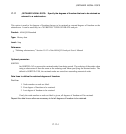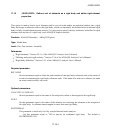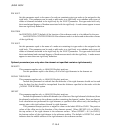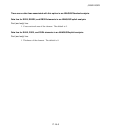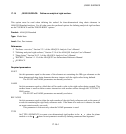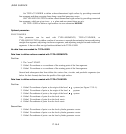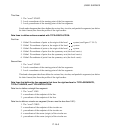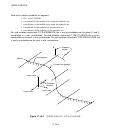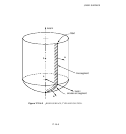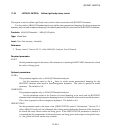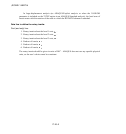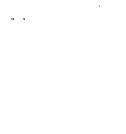
*
RIGID SURFACE
Set TYPE=CYLINDER to define a three -dimensional rigid surface by providing connec ted
line segments and then sweeping them along a specified generator vector.
Set TYPE=REVOLUTION to define a three-dimensional rigid surface by providing connected
line segments, which are given in an
plane and are rotated about an axis.
Set TYPE=USER to define a rigid surface via user subroutine RSURFU.
Optional parameter:
FILLET RADIUS
This param eter can be used with TYPE=SEGMENTS, TYPE=CYLINDER, or
TYPE=REVOLUTION to define a radius of curvature to sm ooth discontinuities between adjoining
straight-line segments, adjoining circul ar-arc segments, and adjoining straight- line and circular-ar c
segments. It has no effect on rigid surfaces defined with TYPE=USER.
No data lines are needed for TYPE=USER.
Data lines to define surfaces created with TYPE=SEGMENTS:
First line:
1. The “word” STA RT.
2. Global X-coordinate or r-coordinate of the starting point of the line segments.
3. Global Y-coordinate or z-coordinate of the starting point of the line segments.
Second and subsequent data lines define the various line, circular, and parabolic segments (see
below for their form at) that form the profile of the rigid surface.
Data lines to define surfaces created with TYPE=CYLINDER:
First line:
1. Global X-coordinate of point a, the origin of the local system (see Figure 17.19–1).
2. Global Y-coordinate of poi nt a, the origin of the local
system.
3. Global Z-coordinate of point a, the origin of the local
system.
4. Global X-coordina te of point b on the local x-axis.
5. Global Y-coordina te of point b on the local x-axis.
6. Global Z-coordinate of point b on the local x-axis.
Second line:
1. Global X-coordinate of poi nt c on the local cylinder generator vector.
2. Global Y-coordinate of point c on the local cylinder generator vector.
3. Global Z-coordinate of point c on the local cy linder generator vector.
17.19–2
ABAQUS Version 6.1 Module:
ID:
Printed on:




